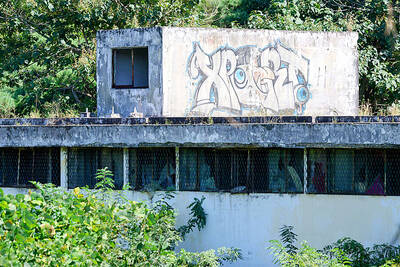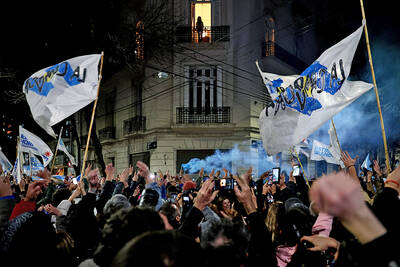The World Health Organization (WHO) and the UN AIDS program said on Wednesday that they would not reach their heavily promoted "3 by 5" goal of treating 3 million HIV-infected poor people by the end of the year.
Officials of several health agencies fighting AIDS blamed problems in the drug supply chain and shortages of health workers.
At the same time, they expressed hope that the number of people dying of the disease annually could stop growing by next year.
About 1 million people in poor countries are receiving antiretroviral drugs, said Dr. Kim Jim-yong, director of the WHO's AIDS department, meaning the program is not on track to reach the goal announced in late 2003. The agency set 3 million as its goal because it seemed to be a reasonable target that could inspire donors and poor countries to act quickly.
Donors have committed US$27 billion over the next three years but have delivered only US$9 billion, the health agencies said.
About 6.5 million of the 40 million people infected are so sick that they are within two years of death and need treatment immediately, officials said Wednesday in a telephone news conference from Geneva, where the WHO is based. For the first time, they included an estimate for desperately ill children -- 660,000, a tenth of the total.
The number of people desperately in need of drugs has grown by about half a million since the treatment goal was announced.
Progress has bogged down for several reasons, health officials said. Many countries have small model treatment programs, but not full-scale national plans.
Problems with drug delivery have been greater than expected, including issues as simple as countries not guaranteeing locked warehouses and trucks for the drugs, which are valuable and toxic if misused. Poor countries have few doctors, nurses and pharmacists.

LANDMARK CASE: ‘Every night we were dragged to US soldiers and sexually abused. Every week we were forced to undergo venereal disease tests,’ a victim said More than 100 South Korean women who were forced to work as prostitutes for US soldiers stationed in the country have filed a landmark lawsuit accusing Washington of abuse, their lawyers said yesterday. Historians and activists say tens of thousands of South Korean women worked for state-sanctioned brothels from the 1950s to 1980s, serving US troops stationed in country to protect the South from North Korea. In 2022, South Korea’s top court ruled that the government had illegally “established, managed and operated” such brothels for the US military, ordering it to pay about 120 plaintiffs compensation. Last week, 117 victims

China on Monday announced its first ever sanctions against an individual Japanese lawmaker, targeting China-born Hei Seki for “spreading fallacies” on issues such as Taiwan, Hong Kong and disputed islands, prompting a protest from Tokyo. Beijing has an ongoing spat with Tokyo over islands in the East China Sea claimed by both countries, and considers foreign criticism on sensitive political topics to be acts of interference. Seki, a naturalised Japanese citizen, “spread false information, colluded with Japanese anti-China forces, and wantonly attacked and smeared China”, foreign ministry spokesman Lin Jian told reporters on Monday. “For his own selfish interests, (Seki)

Argentine President Javier Milei on Sunday vowed to “accelerate” his libertarian reforms after a crushing defeat in Buenos Aires provincial elections. The 54-year-old economist has slashed public spending, dismissed tens of thousands of public employees and led a major deregulation drive since taking office in December 2023. He acknowledged his party’s “clear defeat” by the center-left Peronist movement in the elections to the legislature of Buenos Aires province, the country’s economic powerhouse. A deflated-sounding Milei admitted to unspecified “mistakes” which he vowed to “correct,” but said he would not be swayed “one millimeter” from his reform agenda. “We will deepen and accelerate it,” he

Japan yesterday heralded the coming-of-age of Japanese Prince Hisahito with an elaborate ceremony at the Imperial Palace, where a succession crisis is brewing. The nephew of Japanese Emperor Naruhito, Hisahito received a black silk-and-lacquer crown at the ceremony, which marks the beginning of his royal adult life. “Thank you very much for bestowing the crown today at the coming-of-age ceremony,” Hisahito said. “I will fulfill my duties, being aware of my responsibilities as an adult member of the imperial family.” Although the emperor has a daughter — Princess Aiko — the 23-year-old has been sidelined by the royal family’s male-only